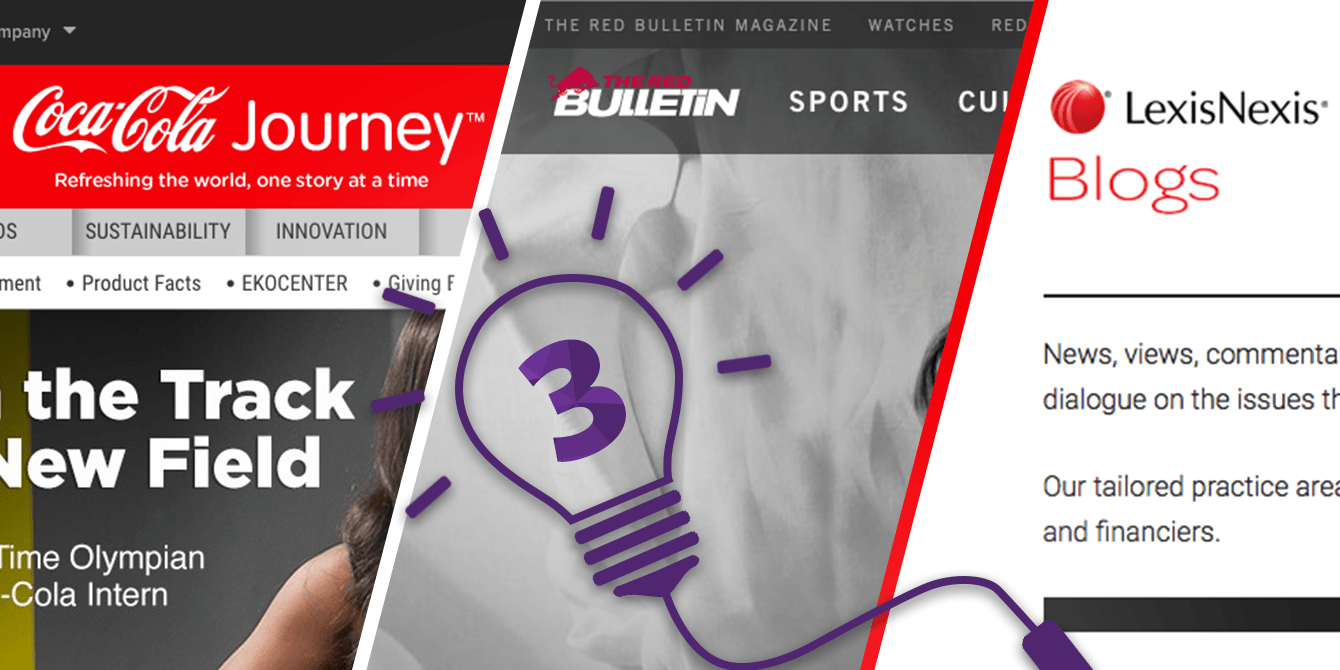
Three examples of successful Content Marketing
Today more and more brands leave the trails of traditional advertising and start to work in the areas of traditional publishing. They establish and maintain their own content channels, such as websites, apps, or magazines, filled with journalistically-driven stories, mostly produced in-house. Managed by marketing departments, these editorial organizations achieve a quality, which more and more cuts the ground from under the feet of the publishers.
On the one hand, this is a response to the changed expectations of customers and readers. Advertising, as known today, continues to lose ground, and traditional media is struggling with declining coverage. Many CMOs have to deal with a further fragmented landscape of digital channels. On the other hand, the long-term incentive to invest in traditional advertising is eroding, because you can reach customers in a much more focussed way using your own channels. The direct contact with the customer, the ability to communicate and interact, as well as much more detailed analytics, that traditional advertising can never achieve, are key factors.
But if the quality of the content is compromised, the brands have a serious problem. Because for the reader, the quality of the content reflects the quality of the brand. So the topics have to match the brand, blunt call-to-actions must be avoided, and, if you want to start a dialog, you must be able to quickly respond to questions.
Often only big brands, that are in the public eye, are used to prove the success and potential of content marketing. But, as in every industry, it needs groundbreaking projects that encourage others to find their own way and successfully implement their ideas. Ultimately, not every classic advertising campaign wins international prizes but could still be very successful. Therefore, it is hardly surprising that one-third of all companies in the USA indicate to increase their budget in content marketing efforts. It is no coincidence, that in 2015 content marketing was the most important marketing trend of the year.
These three brands distinguish by their outstanding content marketing strategy:

Coca-Cola
It is an online magazine, neither a website nor a newsroom. At least, this is what the North American mega-corporation called its own online presence, which comes along in a content marketing robe. Since 1892, Coca-Cola operates marketing, which is often referred to by others as groundbreaking. Whether Santa Claus or the Coca-Cola tin sign, for many people Coca-Cola has become an expression of Western culture and innovative marketing campaigns.
But that‘s not the only reason for Coca-Cola being the most valuable non-IT brand in the world (positions 1–3 are currently occupied by IT companies). The clue on their website: at first sight about half of the content has nothing to do with the soft drink manufacturer. The other half involves content, that speaks obviously positive about Coca-Cola products. In addition, the site is very interactive and invites users to participate. It is hardly surprising, that Coca-Cola is awarded as the pioneer of content marketing anew each year with the prestigious Cannes Lions for their marketing activities.
Coca-Cola social media strategy chief Douglas Busk explains: “Every brand, not just big brands like Coca-Cola, has a chance to take advantage of this digital media revolution to communicate directly with consumers and tell stories. That’s the real power of digital marketing, content marketing, brand marketing, or whatever you call it – in the end, it’s all about dialogue. It’s about direct interaction with consumers where they are and where they tell their stories, online and mobile, every moment, every day.”

Red Bull
The beverage company has a piece of excellent content machinery and interacts with their own Red Bull Media House as a 360-degree media company. The strategy is perfectly aligned with the target group and focuses on quality, added value, entertainment, and audience interaction.
In 2012, their content marketing campaign had reached its preliminary peak in the Stratos project, a milestone in content marketing. It was unique how Red Bull utilized Felix Baumgartner’s record jump from the stratosphere across all channels. On YouTube, the live stream received a hitherto never reached audience of 9 million viewers. In addition to the 200 TV stations that reported worldwide, Red Bull’s own TV channel “Servus TV” broadcasted 10 hours on this mega event. Even the in-house magazine “The Red Bulletin” became part of this unique content strategy, whose overall advertising value is estimated to be 1 billion Euros.

LexisNexis
The US company, known in the anglophone world as a database for legal decisions, pursues an aggressive content marketing strategy with their blog. The content here is custom-tailored to the target group. Thereby, care is taken that the blog topics come from everyday legal practice. These topics are offered to the reader in form of white papers, studies, and tutorials. The surface is rarely scratched here. Quite the opposite, the reader is recognized as an expert and receives relevant content, provided by seven authors, who often are studied lawyers. This content actually offers added value to the readers.

